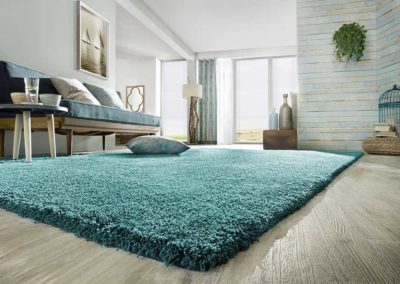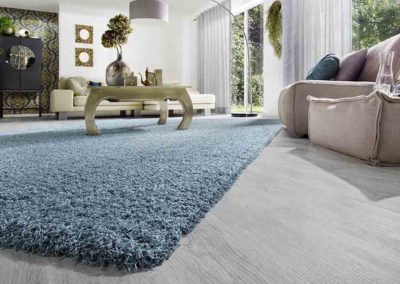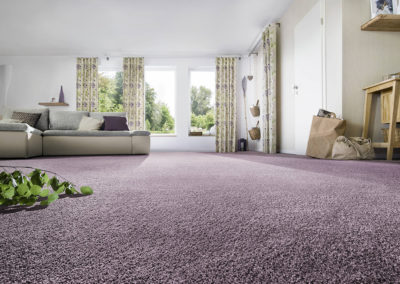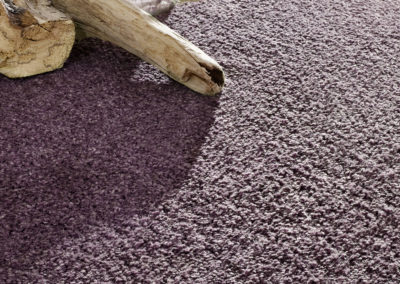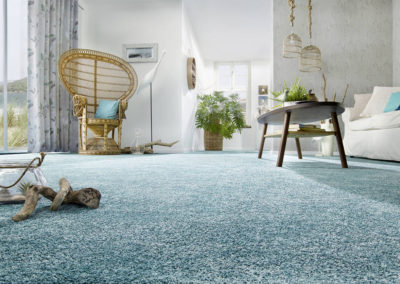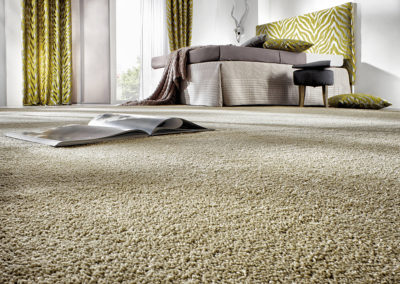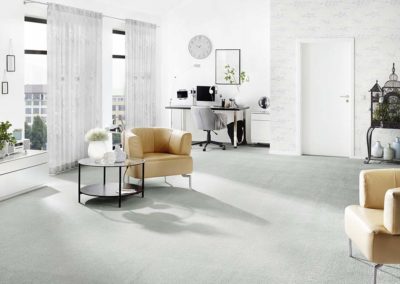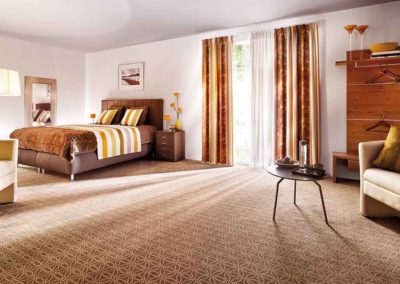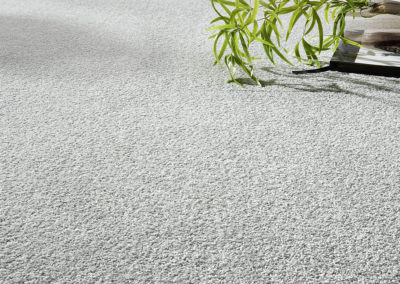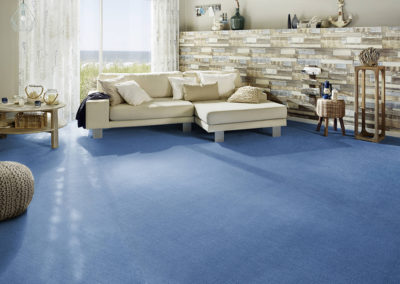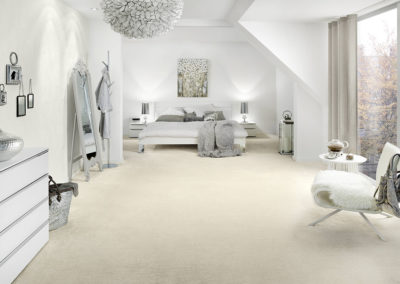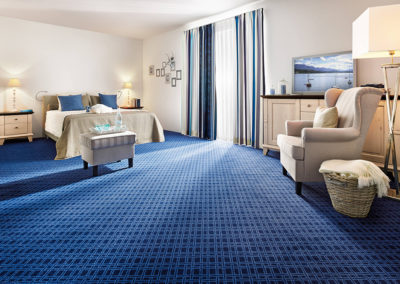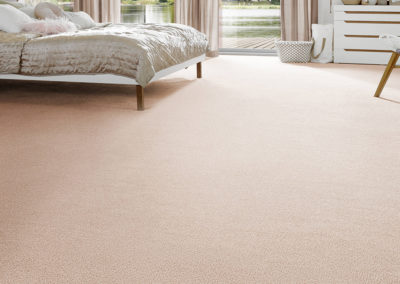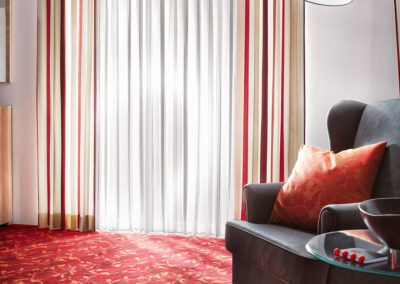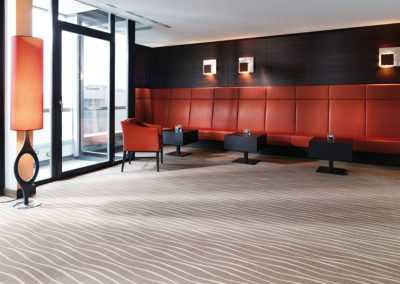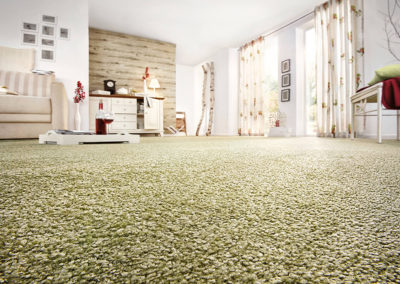Carpet flooring
Trendy carpets in the Bodenstudio showroom
If you like it soft, cosy and warm, then a Carpet is the right choice for you. The floor covering with character creates a cosy feeling and impresses with its comfort. There is no better floor for soundproofing and thermal insulation in a building.
New production techniques are used to manufacture carpets into extremely hard-wearing floor coverings, which are once again popular for use in offices, hotels and house builders. We present the different types of carpets in our Showrooms in Salzburg City and Zell am See so that our customers can get up close and personal with their dream carpet on site.
FAQ - Frequently asked questions about carpets
How do you lay a carpet?
Customers can also lay carpets themselves. However, there are a few things to bear in mind:
- First, the old floor covering is removed and the substrate is cleaned.
- The carpet is then rolled out loosely in the room. It should protrude from the walls by about ten centimetres. It is best to leave the carpet spread out in the room for several hours so that it can lay without creases.
- The carpet is then pressed into the side edges of the room using a cutting edge. Natural fibre carpets or carpets with a fleece backing are fixed in place with double-sided adhesive tape or carpet adhesive.
- For small areas, only the edges need to be glued on; for larger rooms, the surface also needs to be glued on.
- For carpeting that needs to be glued over the entire surface, the carpet adhesive is spread over the entire substrate. The carpet is then laid on the wet adhesive bed and pressed smooth with a roller.
- The protruding side edges can now be cut off completely. The carpet is cut diagonally at the inside corners without going all the way to the floor.
- Press the protruding pieces into the corner and cut off the remnants here too.
How long does a new carpet have to lie?
The carpet should be left for at least 12 hours before laying to get all the undulations out of the covering - 24 hours would be ideal.
What does short pile carpet mean?
Pile In textile technology, this refers to fibres that protrude from the fabric. Short pile refers to all carpets with a pile height of one to 15 millimetres.
The chamfers of a Short pile carpet are bound more tightly and are therefore a better surface for patterned designs. Short-pile carpets are also easier to clean as the short fibres do not catch dirt as quickly.
What is a deep pile carpet?
A High pile carpet has a consistently high pile of at least 16 millimetres in height. This means that detailed patterns cannot be displayed.
In a household with animals, this type of carpet is unfavourable, as animal hair and dirt very quickly get caught in the long pile fibres and become a dirt trap.
The biggest advantage of a high-pile carpet is its soft and fluffy look and the ideal footfall sound insulation.
Is a carpet unhygienic?
If cleaned regularly with a professional carpet cleaner, the floor is also suitable for allergy sufferers. It is also important that the humidity is not too high.
The higher the pile, the more difficult it is to clean. This is why short pile carpets are used much more frequently in high-traffic areas such as hotels.
Which is better, carpet or laminate?
Both floor coverings have their advantages and disadvantages. It always depends on the individual benefit.
Carpets can be used well in the living room as they ensure a good indoor climate and provide ideal sound insulation.
Laminate is easier to clean and its wood look makes it versatile. However, it cannot compete with carpet in terms of warmth and sound absorption.
Customer testimonials
.


